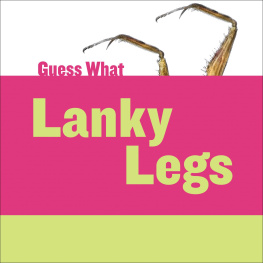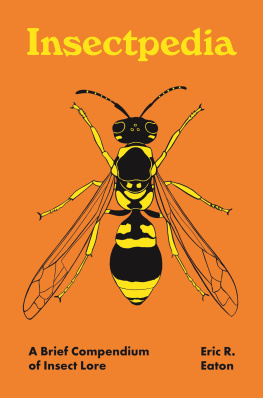Start Publishing LLC
Copyright 2012 by Start Publishing LLC
All rights reserved, including the right to reproduce this book or portions thereof in any form whatsoever.
First Start Publishing eBook edition October 2012
Start Publishing is a registered trademark of Start Publishing LLC
Manufactured in the United States of America
10 9 8 7 6 5 4 3 2 1
ISBN 978-1-62558-710-7
A warm and heart-felt thanks
needs to be sent to my best friend
Valerie. She has helped me out
of many scrapes, including
finding a cover for this book!
Social Life in the Insect World
by J. Henri Fabre
The Fable of the Cigale and the Ant
Fame is the daughter of Legend. In the world of creatures, as in the world of men, the story precedes and outlives history. There are many instances of the fact that if an insect attract our attention for this reason or that, it is given a place in those legends of the people whose last care is truth.
For example, who is there that does not, at least by hearsay, know the Cigale? Where in the entomological world shall we find a more famous reputation? Her fame as an impassioned singer, careless of the future, was the subject of our earliest lessons in repetition. In short, easily remembered lines of verse, we learned how she was destitute when the winter winds arrived, and how she went begging for food to the Ant, her neighbour. A poor welcome she received, the would-be borrower!a welcome that has become proverbial, and her chief title to celebrity. The petty malice of the two short lines
Vous chantiez! jen suis bien aise, Eh bien, dansez maintenant!
has done more to immortalise the insect than her skill as a musician. You sang! I am very glad to hear it! Now you can dance! The words lodge in the childish memory, never to be forgotten. To most Englishmento most Frenchmen eventhe song of the Cigale is unknown, for she dwells in the country of the olive-tree; but we all know of the treatment she received at the hands of the Ant. On such trifles does Fame depend! A legend of very dubious value, its moral as bad as its natural history; a nurses tale whose only merit is its brevity; such is the basis of a reputation which will survive the wreck of centuries no less surely than the tale of Puss-in-Boots and of Little Red Riding-Hood.
The child is the best guardian of tradition, the great conservative. Custom and tradition become indestructible when confided to the archives of his memory. To the child we owe the celebrity of the Cigale, of whose misfortunes he has babbled during his first lessons in recitation. It is he who will preserve for future generations the absurd nonsense of which the body of the fable is constructed; the Cigale will always be hungry when the cold comes, although there were never Cigales in winter; she will always beg alms in the shape of a few grains of wheat, a diet absolutely incompatible with her delicate capillary tongue; and in desperation she will hunt for flies and grubs, although she never eats.
Whom shall we hold responsible for these strange mistakes? La Fontaine, who in most of his fables charms us with his exquisite fineness of observation, has here been ill-inspired. His earlier subjects he knew down to the ground: the Fox, the Wolf, the Cat, the Stag, the Crow, the Rat, the Ferret, and so many others, whose actions and manners he describes with a delightful precision of detail. These are inhabitants of his own country; neighbours, fellow-parishioners. Their life, private and public, is lived under his eyes; but the Cigale is a stranger to the haunts of Jack Rabbit. La Fontaine had never seen nor heard her. For him the celebrated songstress was certainly a grasshopper.
Grandville, whose pencil rivals the authors pen, has fallen into the same error. In his illustration to the fable we see the Ant dressed like a busy housewife. On her threshold, beside her full sacks of wheat, she disdainfully turns her back upon the would-be borrower, who holds out her clawpardon, her hand. With a wide coachmans hat, a guitar under her arm, and a skirt wrapped about her knees by the gale, there stands the second personage of the fable, the perfect portrait of a grasshopper. Grandville knew no more than La Fontaine of the true Cigale; he has beautifully expressed the general confusion.
But La Fontaine, in this abbreviated history, is only the echo of another fabulist. The legend of the Cigale and the cold welcome of the Ant is as old as selfishness: as old as the world. The children of Athens, going to school with their baskets of rush-work stuffed with figs and olives, were already repeating the story under their breath, as a lesson to be repeated to the teacher. In winter, they used to say, the Ants were putting their damp food to dry in the sun. There came a starving Cigale to beg from them. She begged for a few grains. The greedy misers replied: You sang in the summer, now dance in the winter. This, although somewhat more arid, is precisely La Fontaines story, and is contrary to the facts.
Yet the story comes to us from Greece, which is, like the South of France, the home of the olive-tree and the Cigale. Was sop really its author, as tradition would have it? It is doubtful, and by no means a matter of importance; at all events, the author was a Greek, and a compatriot of the Cigale, which must have been perfectly familiar to him. There is not a single peasant in my village so blind as to be unaware of the total absence of Cigales in winter; and every tiller of the soil, every gardener, is familiar with the first phase of the insect, the larva, which his spade is perpetually discovering when he banks up the olives at the approach of the cold weather, and he knows, having seen it a thousand times by the edge of the country paths, how in summer this larva issues from the earth from a little round well of its own making; how it climbs a twig or a stem of grass, turns upon its back, climbs out of its skin, drier now than parchment, and becomes the Cigale; a creature of a fresh grass-green colour which is rapidly replaced by brown.
We cannot suppose that the Greek peasant was so much less intelligent than the Provenal that he can have failed to see what the least observant must have noticed. He knew what my rustic neighbours know so well. The scribe, whoever he may have been, who was responsible for the fable was in the best possible circumstances for correct knowledge of the subject. Whence, then, arose the errors of his tale?
Less excusably than La Fontaine, the Greek fabulist wrote of the Cigale of the books, instead of interrogating the living Cigale, whose cymbals were resounding on every side; careless of the real, he followed tradition. He himself echoed a more ancient narrative; he repeated some legend that had reached him from India, the venerable mother of civilisations. We do not know precisely what story the reed-pen of the Hindoo may have confided to writing, in order to show the perils of a life without foresight; but it is probable that the little animal drama was nearer the truth than the conversation between the Cigale and the Ant. India, the friend of animals, was incapable of such a mistake. Everything seems to suggest that the principal personage of the original fable was not the Cigale of the Midi, but some other creature, an insect if you will, whose manners corresponded to the adopted text.
Imported into Greece, after long centuries during which, on the banks of the Indus, it made the wise reflect and the children laugh, the ancient anecdote, perhaps as old as the first piece of advice that a father of a family ever gave in respect of economy, transmitted more or less faithfully from one memory to another, must have suffered alteration in its details, as is the fate of all such legends, which the passage of time adapts to the circumstance of time and place.










